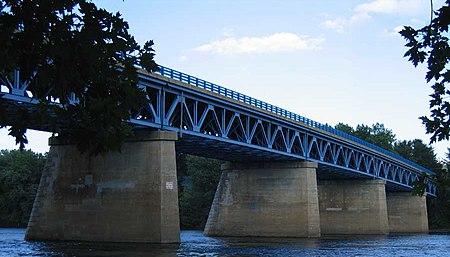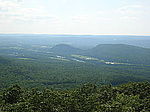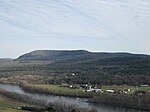Sunderland Bridge (Massachusetts)
1937 establishments in MassachusettsBridges completed in 1937Bridges completed in 1994Bridges in Franklin County, MassachusettsBridges over the Connecticut River ... and 8 more
Deerfield, MassachusettsMassachusetts building and structure stubsMassachusetts transportation stubsMetal bridges in the United StatesNortheastern United States bridge (structure) stubsRoad bridges in MassachusettsSunderland, MassachusettsTruss bridges in the United States

The Sunderland Bridge is a crossing over the Connecticut River in western Massachusetts, connecting the towns of South Deerfield and Sunderland, carrying Massachusetts Route 116.
Excerpt from the Wikipedia article Sunderland Bridge (Massachusetts) (License: CC BY-SA 3.0, Authors, Images).Sunderland Bridge (Massachusetts)
Bridge Street,
Geographical coordinates (GPS) Address External links Nearby Places Show on map
Geographical coordinates (GPS)
| Latitude | Longitude |
|---|---|
| N 42.4675 ° | E -72.585 ° |
Address
Bridge Street
01373
Massachusetts, United States
Open on Google Maps









